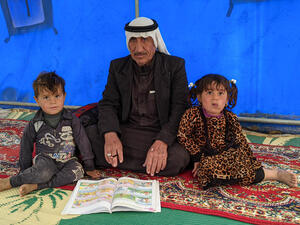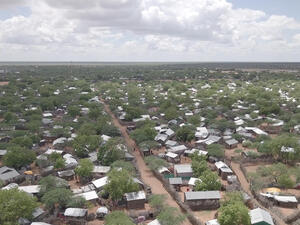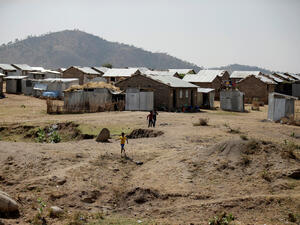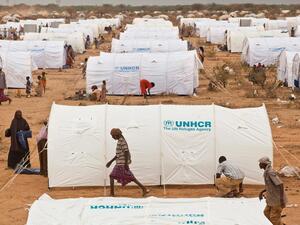UNHCR employs alternative strategies in managing the Dadaab camps
UNHCR employs alternative strategies in managing the Dadaab camps
In an effort to maintain operations despite prevailing insecurity and reduced humanitarian access at Kenya's Dadaab refugee camps, UNHCR has been exploring ways to ensure uninterrupted assistance and services in the world's largest refugee settlement.
The new measures include stronger and deeper involvement of the refugee communities in the day-to-day running of the camps, by reaching out to different groups within the refugee population, such as elders, the business community, and youth. Complementing this, UNHCR is organizing additional training, mentoring and capacity building for refugee workers and volunteers.
Refugees have always had a role in making camps work. However at Dadaab that role is being expanded. Hospitals, for example, have remained open throughout this difficult period, staffed by refugees, nationals, and a limited number of international staff. Furthermore, in situations when international or national staff cannot get to camps the health posts are managed by refugee staff who have been trained over the years to provide basic medical services and refer more serious cases to the camp hospitals. Refugee staff are also getting refresher courses on management of sensitive cases of sexual or gender based violence.
Together with our partners we are working to control outbreaks of measles and cholera. Monitoring is conducted on a weekly basis and the number of reported cases is now on the decline in all camps - from some 150 suspected cases at the end of 2011 to about 50 suspected cases in the first weeks of this year.
In addition, refugee leaders and refugees working for partner agencies are being trained to identify individuals and families who require immediate protection or life-saving assistance. This is especially important for people with severe disabilities, who cannot access help and services on their own, as well as for unaccompanied children and victims of rape or other types of violence. Since the beginning of this year UNHCR, partner agencies, and refugees have worked together to identify over 150 vulnerable people and families who have be have been brought to UNHCR offices in Dadaab for protection interviews and psycho-social, medical or legal follow-up.
In the area of water and sanitation, refugees are building new latrines on sandy and rocky ground and are collecting and transporting solid waste by donkey carts to allocated waste disposal sites. The water and sanitation committees, a network of volunteers that control the water delivery and sanitation services on household level, have also received additional resources and responsibilities for overall coordination and monitoring of these activities, running like a help desk in the camps.
In parallel, we are also engaging refugee youth in livelihood possibilities to develop and enhance their skills and work experience. Some have already volunteered to help collect garbage and oversee activities at water points.
More than 30 camp schools remain open and are run by refugee teachers. Despite insecurity, the Kenyan National Exams took place in the camps at the end of last year and the results were an improvement in the average score in comparison to last year. The exams were made possible because the community patrolled the schools and guarded the gates.
We are identifying other specific groups in the community for further outreach, such as the business community and the religious leaders and strengthening awareness and communications through radio. Together with the NGO Film Aid International we are about to launch a newly established SMS system that allows refugees to receive mobile text messages and respond for free.
Dadaab refugee complex presently shelters more than 460,000 refugees. A third of this refugee population arrived in 2011 alone, fleeing the conflict, drought, famine and human rights abuses in Somalia. The camps in Dadaab opened two decades ago and were originally designed to host some 90,000 refugees.









